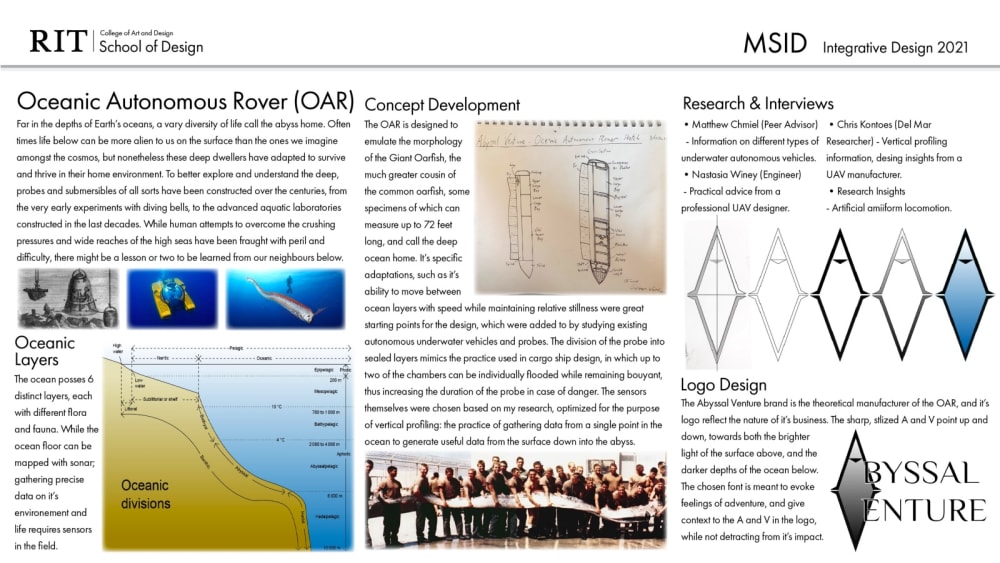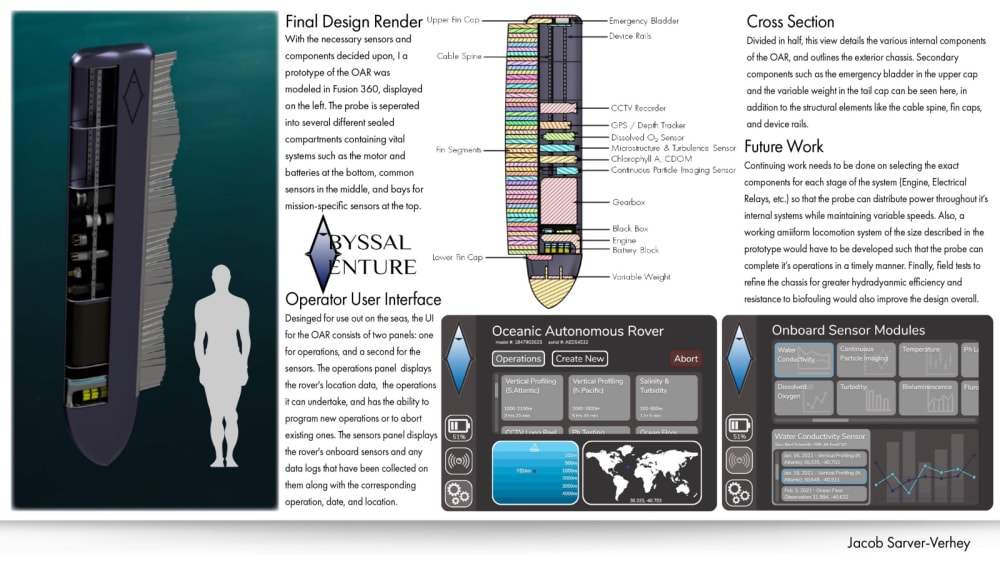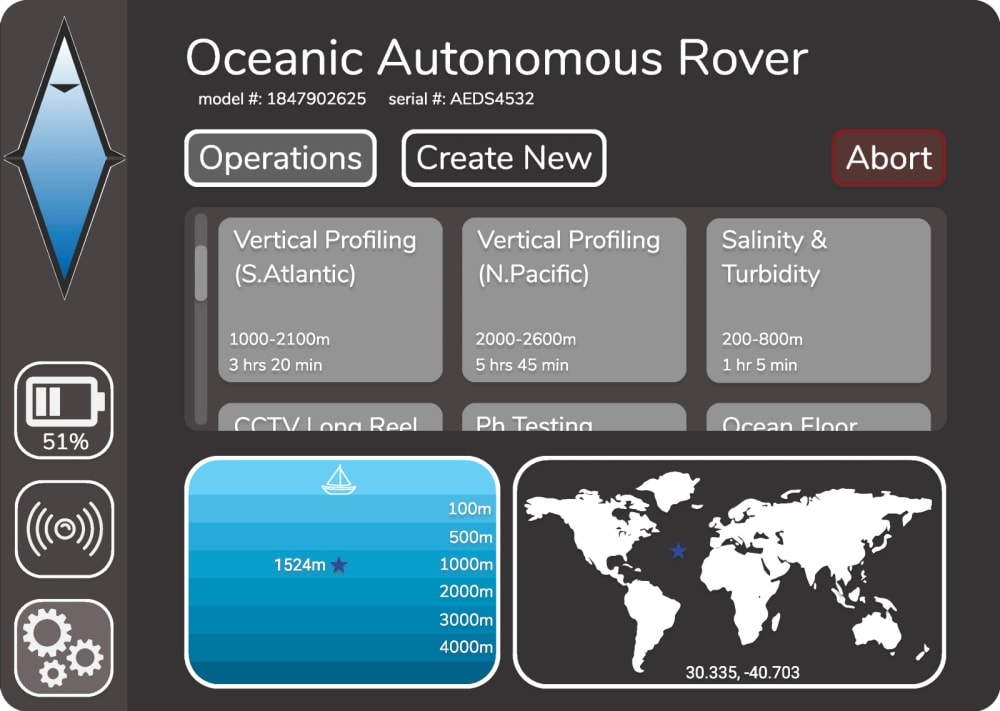Far in the depths of Earth’s oceans, a vary diversity of life call the abyss home. Often times life below can be more alien to us on the surface than the ones we imagine amongst the cosmos, but nonetheless these deep dwellers have adapted to survive and thrive in their home environment. To better explore and understand the deep, probes and submersibles of all sorts have been constructed over the centuries, from the very early experiments with diving bells, to the advanced aquatic laboratories constructed in the last decades. While human attempts to overcome the crushing pressures and wide reaches of the high seas have been fraught with peril and difficulty, there might be a lesson or two to be learned from our neighbours below.
The OAR is designed to emulate the morphology of the Giant Oarfish, the much greater cousin of the common oarfish, some specimens of which can measure up to 72 feet long, and call the deep ocean home. It’s specific adaptations, such as it’s hydrodynamically refined body and method of Amiiform locomotion; a form of movement involving it’s long dorsal fin in sinusoidal motions, allow the Giant Oarfish to quickly and efficiently move between oceanic layers. In addition, the stability of it's locomotion allows for one of the strongest systems of organic electrosensory detection of any animal, a trait that eminently applicable to the design of deep sea probes with their sensitive instruments. The design of the OAR was refined by studying existing autonomous underwater vehicles and probes, such as the Del Mar Wirewalker and Woods Hole Sentry. The division of the probe into sealed layers mimics the practice used in cargo ship design, in which up to two of the chambers can be individually flooded while remaining buoyant, thus increasing the duration of the probe in case of danger. The sensors themselves were chosen based on my research, optimized for the purpose of vertical profiling: the practice of gathering data from a single point in the ocean to generate useful data from the surface down into the abyss.
Like this entry?
-
About the Entrant
- Name:Jacob Sarver Verhey
- Type of entry:individual
- Software used for this entry:Autodesk Fusion 360, Adobe InDesign, Adobe Illustrator, Figma
- Patent status:none








